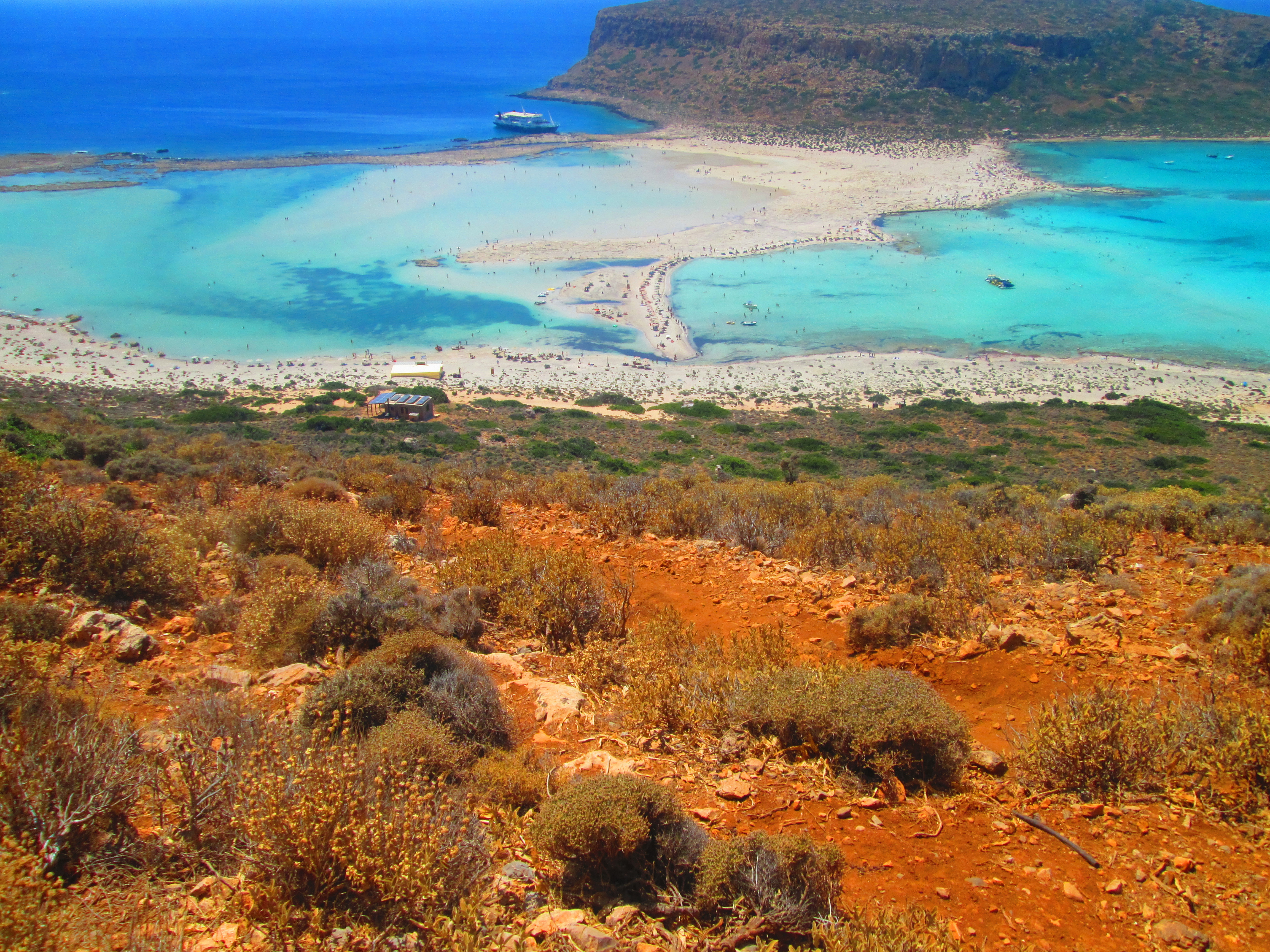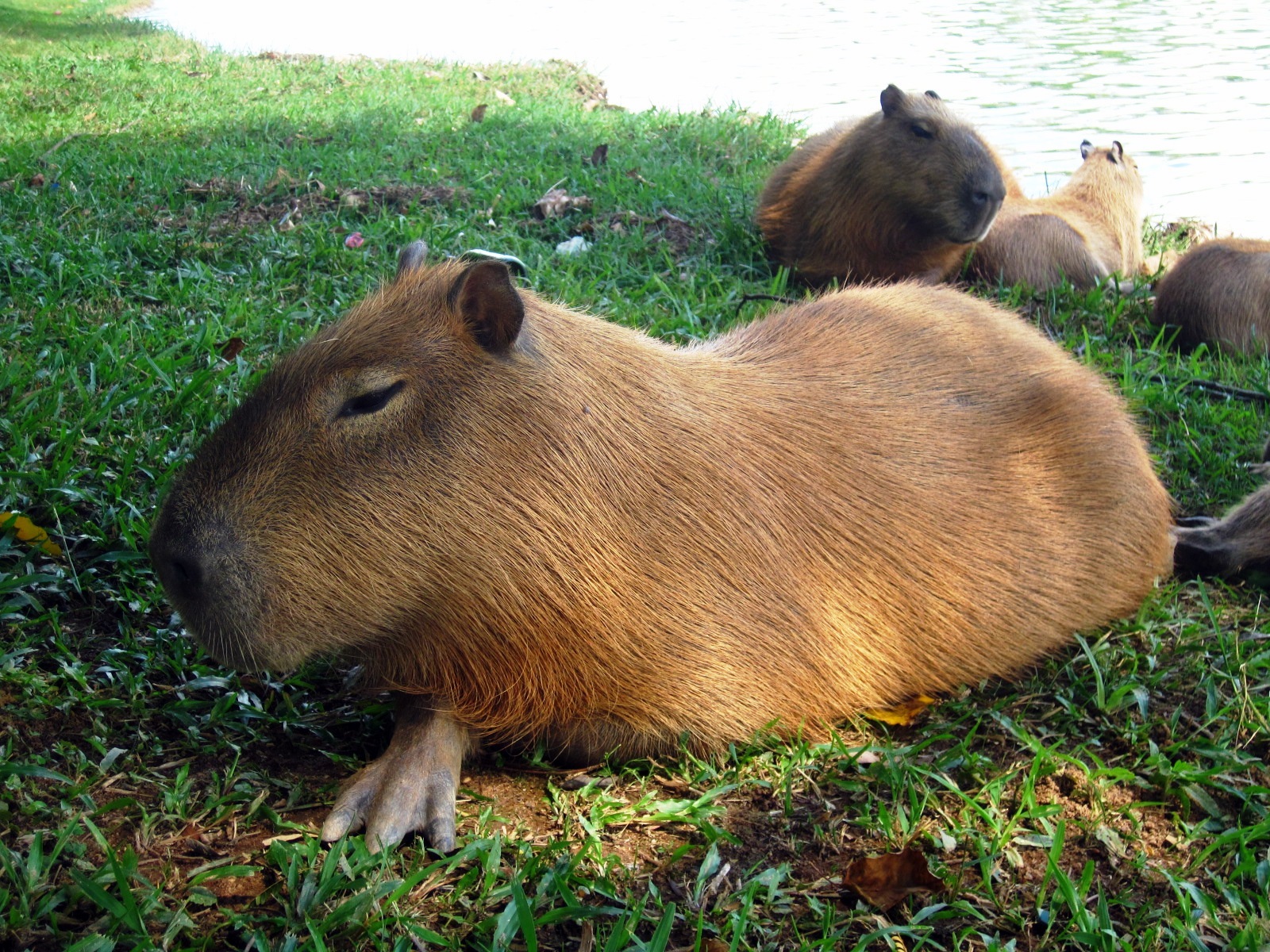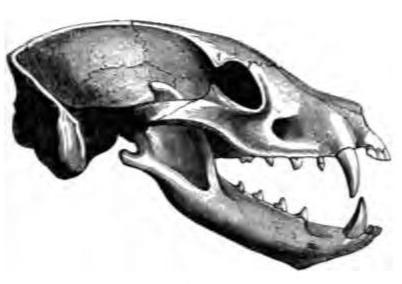|
Microglanis Iheringi
''Microglanis iheringi'' is a species of South American catfish described by Alcides Lourenço Gomes in 1945. The species belongs to the genus Microglanis, a group of catfishes that are native to South America and which are distributed widely throughout the region. M. iheringi is endemic to the Orinoco river basin and populations are present in parts of Colombia and Venezuela. One estimate places the total population at more than 10,000 individuals. The species inhabits freshwater rivers, streams, and lagoons which are usually clear and flowing. It is typically demersal and insectivorous, primarily feeding on ants. Standard length for an individual is about 60 millimeters. A single female may produce nearly 650 eggs in a breeding season. Specimens may be identified distinctly from other species in the genus by its "bar-shaped blotch on caudal-fin base" and a "lateral line reaching a vertical through adipose-fin origin" The International Union for Conservation of Nature list ... [...More Info...] [...Related Items...] OR: [Wikipedia] [Google] [Baidu] |
Aquarium
An aquarium (plural: ''aquariums'' or ''aquaria'') is a vivarium of any size having at least one transparent side in which aquatic plants or animals are kept and displayed. Fishkeepers use aquaria to keep fish, invertebrates, amphibians, aquatic reptiles, such as turtles, and aquatic plants. The term ''aquarium'', coined by English naturalist Philip Henry Gosse, combines the Latin root , meaning 'water', with the suffix , meaning 'a place for relating to'. The aquarium principle was fully developed in 1850 by the chemist Robert Warington, who explained that plants added to water in a container would give off enough oxygen to support animals, so long as the numbers of animals did not grow too large. The aquarium craze was launched in early Victorian England by Gosse, who created and stocked the first public aquarium at the London Zoo in 1853, and published the first manual, ''The Aquarium: An Unveiling of the Wonders of the Deep Sea'' in 1854.Katherine C. Grier (2008) ... [...More Info...] [...Related Items...] OR: [Wikipedia] [Google] [Baidu] |
Lagoon
A lagoon is a shallow body of water separated from a larger body of water by a narrow landform, such as reefs, barrier islands, barrier peninsulas, or isthmuses. Lagoons are commonly divided into '' coastal lagoons'' (or ''barrier lagoons'') and '' atoll lagoons''. They have also been identified as occurring on mixed-sand and gravel coastlines. There is an overlap between bodies of water classified as coastal lagoons and bodies of water classified as estuaries. Lagoons are common coastal features around many parts of the world. Definition and terminology Lagoons are shallow, often elongated bodies of water separated from a larger body of water by a shallow or exposed shoal, coral reef, or similar feature. Some authorities include fresh water bodies in the definition of "lagoon", while others explicitly restrict "lagoon" to bodies of water with some degree of salinity. The distinction between "lagoon" and "estuary" also varies between authorities. Richard A. Davis Jr. rest ... [...More Info...] [...Related Items...] OR: [Wikipedia] [Google] [Baidu] |
Catfish Of South America
Catfish (or catfishes; order Siluriformes or Nematognathi) are a diverse group of ray-finned fish. Named for their prominent barbels, which resemble a cat's whiskers, catfish range in size and behavior from the three largest species alive, the Mekong giant catfish from Southeast Asia, the wels catfish of Eurasia, and the piraíba of South America, to detritivores (species that eat dead material on the bottom), and even to a tiny parasitic species commonly called the candiru, ''Vandellia cirrhosa''. Neither the armour-plated types nor the naked types have scales. Despite their name, not all catfish have prominent barbels or "whiskers". Members of the Siluriformes order are defined by features of the skull and swimbladder. Catfish are of considerable commercial importance; many of the larger species are farmed or fished for food. Many of the smaller species, particularly the genus ''Corydoras'', are important in the aquarium hobby. Many catfish are nocturnal, [...More Info...] [...Related Items...] OR: [Wikipedia] [Google] [Baidu] |
Pseudopimelodidae
The Pseudopimelodidae are a small family (about 40 species) of catfishes known as the bumblebee catfishes or dwarf marbled catfishes. Some of these fish are popular aquarium fish. Taxonomy This family was formerly a subfamily of Pimelodidae. Pseudopimelodidae is a monophyletic group. Previously, the superfamily Pseudopimelodoidea was sister to superfamilies Sisoroidea + Loricarioidea. However, some evidence has shown this family, along with Pimelodidae, Heptapteridae, and ''Conorhynchos'', may form a monophyletic assemblage, which contradicts the hypothesis that the former family Pimelodidae that included these families is a polyphyletic group. Distribution The Pseudopimelodidae are restricted to fresh water in South America, from the Atrato River in Colombia to Argentina in the Río de la Plata The Río de la Plata (, "river of silver"), also called the River Plate or La Plata River in English, is the estuary formed by the confluence of the Uruguay River and the Paran ... [...More Info...] [...Related Items...] OR: [Wikipedia] [Google] [Baidu] |
Rodolpho Von Ihering
Rodolpho Theodor Wilhelm Gaspar von Ihering (born Taquara, 17 July 1883; died 15 September 1939) was a Brazilian zoologist and biologist, who is considered to be one of the founders of Pisciculture in Brazil. von Ihering was the son of German zoologist Hermann von Ihering and Anna Maria Clara Belzer, and grandson of Rudolf von Jhering. He married Isabel de Azevedo, daughter of Colonel Luis Gonzaga de Azevedo, with whom he had two daughters, Maria and Dora, and a son, who died at the age of four. As a child he spent a lot of time in his father's laboratory and this gave him a grounding in Zoology and when he graduated from the university of University of São Paulo in 1901 with a Bachelor of Science and Letters in 1901 his father, who was Direcor of the Museu Paulista, appointed him as deputy director for finance of the museum that year. He published his first scientific paper in 1903 and he mainly published in the Magazine of the Paulista Museum, often on systematics. In 1911 he tra ... [...More Info...] [...Related Items...] OR: [Wikipedia] [Google] [Baidu] |
Extinction
Extinction is the termination of a kind of organism or of a group of kinds ( taxon), usually a species. The moment of extinction is generally considered to be the death of the last individual of the species, although the capacity to breed and recover may have been lost before this point. Because a species' potential range may be very large, determining this moment is difficult, and is usually done retrospectively. This difficulty leads to phenomena such as Lazarus taxa, where a species presumed extinct abruptly "reappears" (typically in the fossil record) after a period of apparent absence. More than 99% of all species that ever lived on Earth, amounting to over five billion species, are estimated to have died out. It is estimated that there are currently around 8.7 million species of eukaryote globally, and possibly many times more if microorganisms, like bacteria, are included. Notable extinct animal species include non-avian dinosaurs, saber-toothed cats, dod ... [...More Info...] [...Related Items...] OR: [Wikipedia] [Google] [Baidu] |
Least-concern Species
A least-concern species is a species that has been categorized by the International Union for Conservation of Nature (IUCN) as evaluated as not being a focus of species conservation because the specific species is still plentiful in the wild. They do not qualify as threatened, near threatened, or (before 2001) conservation dependent. Species cannot be assigned the "Least Concern" category unless they have had their population status evaluated. That is, adequate information is needed to make a direct, or indirect, assessment of its risk of extinction based on its distribution or population status. Evaluation Since 2001 the category has had the abbreviation "LC", following the IUCN 2001 Categories & Criteria (version 3.1). Before 2001 "least concern" was a subcategory of the "Lower Risk" category and assigned the code "LR/lc" or lc. Around 20% of least concern taxa (3261 of 15636) in the IUCN database still use the code "LR/lc", which indicates they have not been re-evalu ... [...More Info...] [...Related Items...] OR: [Wikipedia] [Google] [Baidu] |
IUCN Red List
The International Union for Conservation of Nature (IUCN) Red List of Threatened Species, also known as the IUCN Red List or Red Data Book, founded in 1964, is the world's most comprehensive inventory of the global conservation status of biological species. It uses a set of precise criteria to evaluate the extinction risk of thousands of species and subspecies. These criteria are relevant to all species and all regions of the world. With its strong scientific base, the IUCN Red List is recognized as the most authoritative guide to the status of biological diversity. A series of Regional Red Lists are produced by countries or organizations, which assess the risk of extinction to species within a political management unit. The aim of the IUCN Red List is to convey the urgency of conservation issues to the public and policy makers, as well as help the international community to reduce species extinction. According to IUCN the formally stated goals of the Red List are to provide ... [...More Info...] [...Related Items...] OR: [Wikipedia] [Google] [Baidu] |
Insectivore
A robber fly eating a hoverfly An insectivore is a carnivorous animal or plant that eats insects. An alternative term is entomophage, which can also refer to the human practice of eating insects. The first vertebrate insectivores were amphibians. When they evolved 400 million years ago, the first amphibians were piscivores, with numerous sharp conical teeth, much like a modern crocodile. The same tooth arrangement is however also suited for eating animals with exoskeletons, thus the ability to eat insects is an extension of piscivory. At one time, insectivorous mammals were scientifically classified in an order called Insectivora. This order is now abandoned, as not all insectivorous mammals are closely related. Most of the Insectivora taxa have been reclassified; those that have not yet been reclassified and found to be truly related to each other remain in the order Eulipotyphla. Although individually small, insects exist in enormous numbers. Insects make u ... [...More Info...] [...Related Items...] OR: [Wikipedia] [Google] [Baidu] |
Demersal Fish
Demersal fish, also known as groundfish, live and feed on or near the bottom of seas or lakes (the demersal zone).Walrond Carl . "Coastal fish - Fish of the open sea floor"Te Ara - the Encyclopedia of New Zealand. Updated 2 March 2009 They occupy the sea floors and lake beds, which usually consist of mud, sand, gravel or rocks. In coastal waters they are found on or near the continental shelf, and in deep waters they are found on or near the continental slope or along the continental rise. They are not generally found in the deepest waters, such as abyssal depths or on the abyssal plain, but they can be found around seamounts and islands. The word ''demersal'' comes from the Latin ''demergere'', which means ''to sink''. Demersal fish are bottom feeders. They can be contrasted with pelagic fish which live and feed away from the bottom in the open water column. Demersal fish fillets contain little fish oil (one to four percent), whereas pelagic fish can contain up to 30 ... [...More Info...] [...Related Items...] OR: [Wikipedia] [Google] [Baidu] |
Stream
A stream is a continuous body of surface water flowing within the bed and banks of a channel. Depending on its location or certain characteristics, a stream may be referred to by a variety of local or regional names. Long large streams are usually called rivers, while smaller, less voluminous and more intermittent streams are known as streamlets, brooks or creeks. The flow of a stream is controlled by three inputs – surface runoff (from precipitation or meltwater), daylighting (streams), daylighted subterranean river, subterranean water, and surfaced groundwater (Spring (hydrology), spring water). The surface and subterranean water are highly variable between periods of rainfall. Groundwater, on the other hand, has a relatively constant input and is controlled more by long-term patterns of precipitation. The stream encompasses surface, subsurface and groundwater fluxes that respond to geological, geomorphological, hydrological and biotic controls. Streams are importan ... [...More Info...] [...Related Items...] OR: [Wikipedia] [Google] [Baidu] |
Alcides Lourenҫo Gomes
''Alcides'' is a genus of uraniid moths from northern Australia, New Guinea, and other islands in the region. They are diurnal and strongly marked with iridescent colours. List of species * '' Alcides agathyrsus'' Kirsch, 1877 yn.= A. boops (Westwood, 1879)/small> * '' Alcides aruus'' Felder, 1874 * '' Alcides aurora'' Salvin & Godman, 1877 * '' Alcides cydnus'' Felder, 1859 * ''Alcides latona'' Druce, 1886 * '' Alcides leone'' Vinciguerra, 2007 * ''Alcides metaurus'' Hopffer, 1856 yn.=A. zodiaca (Butler, 1869)/small> * ''Alcides orontes'' Linnaeus, 1763 * ''Alcides privitera'' Vinciguerra, 2007 Current systematic and taxonomic knowledge of Genus ''Alcides'' is incomplete, so the status of some taxa remains uncertain including for example, * ''Alcides argyrios'' Gmelin, 1788 * ''Alcides arnus'' Felder & Rogenhofer, 1874 (Probably misprint for aruus) * ''Alcides coerulea'' Pfeiff., 1925 * ''Alcides latona'' Druce, 1886 'vide supra''/small> vs. ''Alcides ribbei'' 'vide inf ... [...More Info...] [...Related Items...] OR: [Wikipedia] [Google] [Baidu] |



.jpg)



_nahe_dem_Weiherdamm_in_Wildbergerhütte.jpg)